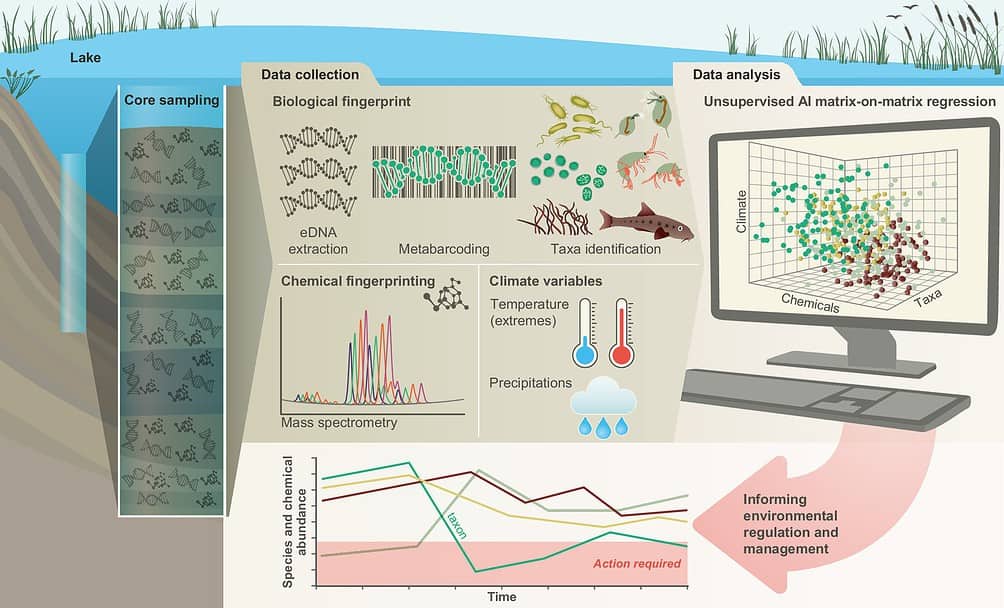
Scientists have unfolded a century of environmental history using a novel ‘biodiversity time machine’. This pioneering AI-driven technology was used to analyse a 100-year-old library of data from a Danish lake, revealing pollution levels, extreme weather events, and temperature increases. The study discovered that insecticides, fungicides, and rising temperatures were primary culprits in damaging biodiversity.
- Scientists used AI-driven “biodiversity time machine” to analyze a century of environmental data;
- The study revealed that insecticides, fungicides, and rising temperatures were major factors in damaging biodiversity;
- Over the past 20 years, a decrease in agricultural land use led to improved water quality and increased biodiversity, but some biodiversity loss may be irreversible.
An AI lens on environmental history
The research team, helmed by Professor Luisa Orsini of the University of Birmingham, used artificial intelligence to reconstruct a 100-year-old library of biodiversity, pollution, and climate change data from a freshwater lake in Denmark. This AI analysis, a ‘biodiversity time machine’ as it’s been coined, has provided unprecedented insight into the environmental changes of the past century.
The AI-driven technology was able to analyse the biological data within the lake’s sediment, effectively turning it into a time capsule of environmental history. It showed that the primary pollutants damaging biodiversity were insecticides and fungicides, along with increasing minimum temperatures. These findings highlight the significant impact human activities and climate change have had on our ecosystems.

Biodiversity recovery and loss
Amid the alarming findings, there was also a glimmer of hope. The AI analysis revealed that over the last twenty years, the lake’s water quality began to improve due to a decrease in agricultural land use. This led to an increase in overall biodiversity, signifying a potential recovery period for the lake’s ecosystem. However, the researchers pointed out that this recovery did not return the biodiversity to its original state, which could affect the delivery of specific ecosystem services.
Lead author Niamh Eastwood further warns that biodiversity loss caused by pollution and warming water temperatures may be irreversible. This serves as a stark reminder that while improvements are promising, they may not be enough to reverse the damage already done.

Future applications of AI in biodiversity studies
Despite the challenging findings, the research also demonstrated the value of this AI-based approach in understanding biodiversity. The technology has the potential to guide regulation of pollutants and prioritize conservation efforts, and can provide a vital tool in our efforts to protect and improve biodiversity levels.
The researchers also plan to expand their AI analysis to other lakes in England and Wales. This will help to further understand the impact of pollution and climate change on lake biodiversity nationwide, and potentially even globally.
AI for more effective conservation policies
AI has also been used to develop CAPTAIN, a tool for systematic conservation planning. It uses reinforcement learning to optimize conservation policies based on user-defined targets and financial constraints. This tool can identify conservation priorities in space and time using simulated or empirical data.
The AI model has shown that current conservation policies result in substantial losses in species numbers, value, and phylogenetic diversity, with 13.6 percent more species losses than the random baseline. CAPTAIN, however, outperforms the current state-of-the-art tool for conservation prioritization, Marxan, in terms of preventing species loss.








